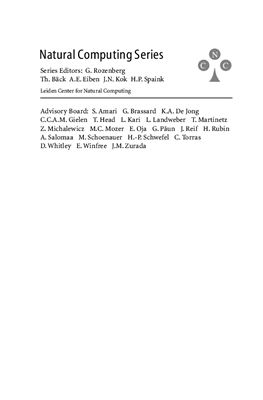Springer, 2005. - 538 Pages.
Ideally, solving a difficult optimization problem should not itself be difficult, e.g. , a structural engineer with an expert knowledge of mechanical principles should not also have to be an expert in optimization theory just to improve his designs. In addition to being easy to use, a global optimization algorithm should also be powerful enough to reliably converge to the true optimum. Furthermore, the computer time spent searching for a solution should not be excessive. Thus, a genuinely useful global optimization method should be simple to implement, easy to use, reliable and fast.
Differential Evolution (DE) is such a method. Since its inception in 1995, DE has eaed a reputation as a very effective global optimizer. While DE is not a panacea, its record of reliable and robust performance demands that it belongs in every scientist and engineer’s bag of tricks.
Ideally, solving a difficult optimization problem should not itself be difficult, e.g. , a structural engineer with an expert knowledge of mechanical principles should not also have to be an expert in optimization theory just to improve his designs. In addition to being easy to use, a global optimization algorithm should also be powerful enough to reliably converge to the true optimum. Furthermore, the computer time spent searching for a solution should not be excessive. Thus, a genuinely useful global optimization method should be simple to implement, easy to use, reliable and fast.
Differential Evolution (DE) is such a method. Since its inception in 1995, DE has eaed a reputation as a very effective global optimizer. While DE is not a panacea, its record of reliable and robust performance demands that it belongs in every scientist and engineer’s bag of tricks.

